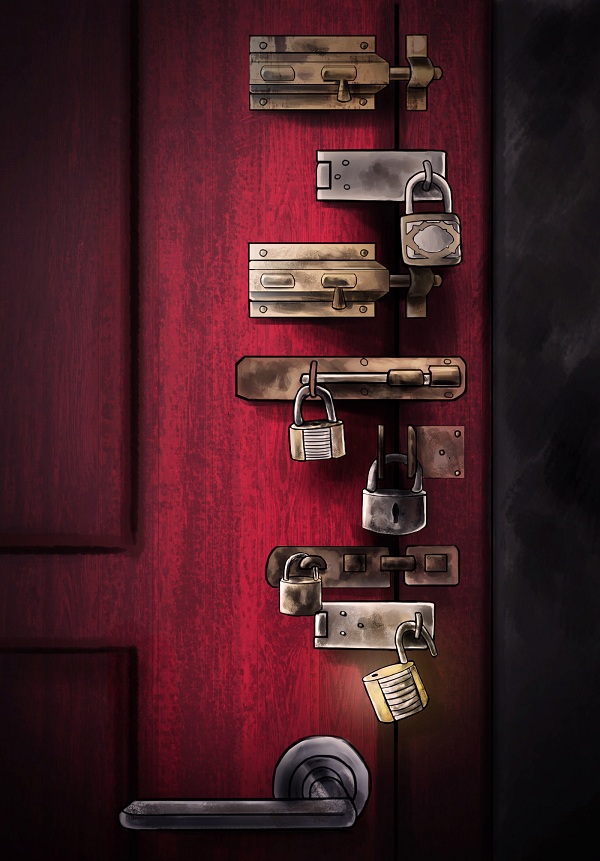Seven
Illustrated by JULIA KIANG
"The most mysterious (poetic) form used in English is the sestina. As the word suggests, the form is based on sixes. Six six-lines stanzas end with a tercet (three-line stanza). The last words on each line in the first stanza are repeated as the last words in the following stanzas, in a defined order... This locked network, along with the incantatory effects of the return of the word in different contexts in each stanza, creates the sestina's closed, web-like structure. Subjects must call for intricacy in order for the form to fit. The sestina especially suits exploring compulsive subjects, problems without solution, obsession or dream state." Frances Mayes
1, 2, 3, 4, 5, 6, 7
Did I lock the door?
Every day is made up of serial
Habits. Habits that keep me locked—
But I know, I know, I know
The door is shut. Am I safe?
My house is my safe.
1, 2, 3, 4, 5, 6, 7
No, the window isn’t locked, I know.
Every morning I block the door
And wonder if everything is locked,
I think of this while I eat my cereal.
We are taught to be scared of serial
Killers and when we’re alone, to feel safe.
Once all the windows and doors are locked,
1, 2, 3, 4, 5, 6, 7
Times, the bad world is stuck behind the shut door.
If only my thoughts could understand the word no.
The doctors say that I should know
My fears are in my head. But these serial
Thoughts don’t stop swinging like a kitchen door.
I haven’t ran by first base and told that I was safe
In 1, 2, 3, 4, 5, 6, 7
Months since that man gave me a locket.
He said he first noticed my curly locks,
And everyday I wish I knew what he knew
Then. 1, 2, 3, 4, 5, 6, 7
Dates later and I found myself with a serial
Stalker. I can’t remember the last time I was safe
From the horrible person knocking on my front door.
I moved and moved and moved to a flat with a door
Man. I bought the toughest bolt to crack from a lock
Smith. Maybe this flat could be my new safe haven.
But that’s unlikely. He’s still watching me I know;
He keeps track of me like the serial number.
1, 2, 3, 4, 5, 6, 7.
I have dreams where I yank out every lock. No, no, no,
I can’t do that. He’s knocking at my door my serial
Suspect. Am I safe? 1, 2, 3, 4, 5, 6, 7.


Comments
Caroline Acoca
November 30, 2012I really like the subject of this poem, and the sestina form really emphasizes the repetitive nature of the narrator’s thoughts. It feels as though we are in the mind of a child who is fearful of her safety, and the end words are very effective - using serial/cereal as well as locks/locket was unique, as sometimes the sestina form is difficult to manipulate. Changing the meaning of the words while being consistent with the sound of the word makes the poem flow more easily. I like how you didn’t change the end word of seven, so “1, 2, 3, 4, 5, 6, 7,” was a repeating sentence rather than word. I also really enjoyed the line “But these serial/Thoughts don’t stop swinging like a kitchen door.” This simile adds more imagery to the poem as well.
You have to be registered and logged in in order to post comments!